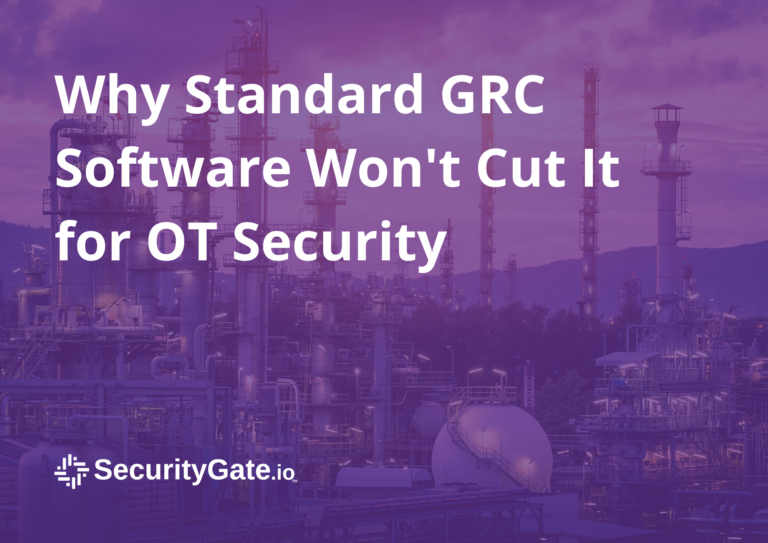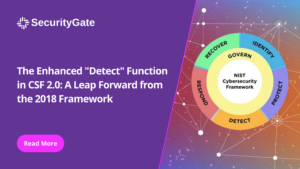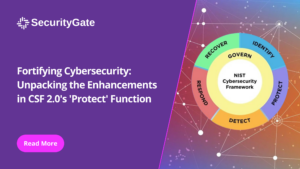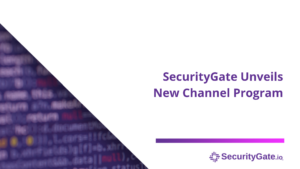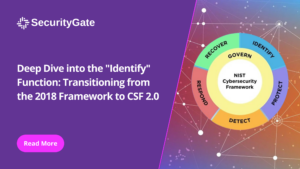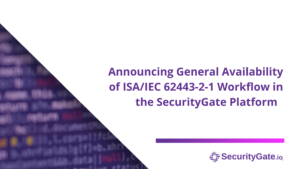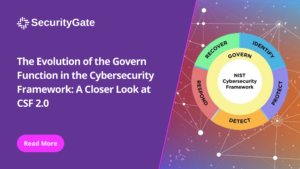In critical infrastructure, where operational technology (OT) systems play a pivotal role, robust risk management and cybersecurity maturity are paramount. Where spreadsheets and manual processes were once enough to manage risk, critical infrastructure organizations are shifting to embrace the capabilities of risk management technology to meet their expanding needs.
Threats, vulnerabilities, and nation-state actors are pressing in on all sides. New security frameworks and attention from the C-suite and business executives are placing greater demands on OT teams. Digital transformation has brought much-needed software solutions to address these priorities, but organizations are now facing difficult choices when identifying the right solution for their budget and needs.
While a flood of governance, risk, and compliance (GRC) software solutions have hit the market, they fall short of meeting the specific requirements for complex and interconnected OT systems.
In this blog, we’ll dig into the shortcomings of standard GRC platforms for critical infrastructure and introduce a purpose-built solution to the challenges risk managers face in an increasingly digitized world.
3 Limitations of Standard GRC Software
Traditional GRC platforms have their merits, but OT security teams using these tools quickly encounter three major issues that limit their potential.
Lack of Focus on Operational Technology
The first drawback of traditional GRC software is fairly obvious but crucial to address, as many organizations only realize this once they’re already locked into an expensive licensing agreement. Traditional GRC platforms aren’t built for purpose, and they aren’t built with OT requirements in mind. GRC platforms are primarily designed for managing risk and compliance in corporate environments, where the focus is on data protection, privacy, and financial regulations. While standard GRC software solutions deliver tools that offer greater efficiency and accuracy for general compliance and risk management, they still consistently fail to address OT-specific needs.
OT environments present distinct challenges, with operational technology, industrial control systems (ICS), and supervisory control and data acquisition (SCADA) systems playing crucial roles that cannot — and should not — be overlooked. Each of these systems supports the daily activities of millions of people, operates in real-time, and control critical processes, such as power generation, water treatment, transportation, and manufacturing.
Traditional GRC software often lacks the necessary understanding of OT environments’ unique complexities and requirements, lacking the workflows, terminology, or taxonomy capabilities that align with how security professionals view, manage, and treat OT risk and compliance.
When organizations in the critical infrastructure sector deploy traditional GRC solutions, they miss out on key capabilities and functionalities that a more specialized solution can offer, potentially exposing their organization to a cyber threat landscape that has not been fully considered opening themselves up to several cyber threats.
Insufficient Support for OT-Specific Standards and Regulations
Regulators have begun to hold critical infrastructure organizations to increasingly rigorous standards for two reasons: the growth of the threat landscape and the importance of these organizations’ services. New and evolving regulations have pushed organizations in some industries, like manufacturing, to take a proactive approach to security and risk management process improvements, thus leading them to kick off the search for a GRC solution.
Every organization in the 16 sectors encompassed under the umbrella of critical infrastructure is subject to various industry-specific standards and regulations, such as NERC CIP, NIST SP 800-82, C2M2, and IEC 62443, among others. Standard GRC software typically lacks comprehensive coverage of these OT-specific standards, given the relative novelty of assessing OT risk posture, Standard GRC software which was designed for IT requirements typically lacks comprehensive coverage of these OT-specific standards, making it challenging for organizations to achieve compliance and effectively manage risks.
Because standard GRC platforms don’t offer out-of-the-box configurations for these crucial frameworks, organizations have to find less-than-ideal workarounds, like manually manipulating inflexible control modules, or be forced to purchase additional platform features and pay development and implementation teams hefty fees to get things up and running.
Limitations for Monitoring Systems with Continuous Up-Times
For critical infrastructure organizations, the ability to monitor systems in real-time and respond swiftly to security incidents is paramount. Critical services like water and energy require continuous system uptimes to prevent service disruptions and potentially catastrophic outages.
Lapses in security or direct cyber-attacks can have devastating effects that these organizations, and their customers, simply can’t afford. That’s why platforms with robust incident monitoring and response capabilities have become more appealing to security teams around the globe. However, buyers beware, as many GRC options on the market lack the power to support the type of monitoring and insight creation that critical infrastructure organizations need to operate confidently and securely.
Traditional GRC software typically lacks the necessary integrations for real-time monitoring and incident response in OT systems. Critical infrastructure organizations require purpose-built platforms that can provide real-time visibility into OT networks, detect anomalous activities, and trigger immediate responses. Without such capabilities, organizations face increased risks of prolonged downtime, compromised safety, and potential cascading effects on other critical services.
What’s the (GRC) Solution?
To address the shortcomings of traditional GRC software and effectively safeguard critical infrastructure, organizations need a purpose-built OT security platform. By embracing specialized solutions, organizations can fortify their risk management and cybersecurity efforts, safeguarding their critical operations from potential threats and disruptions.
With an OT-specific GRC platform, organizations are equipped with:
- Flexibility to meet all cyber maturities: Specialized GRCs offer the flexibility to meet each organization’s individual level of cyber maturity. No matter where your organization is in its security and compliance journey, an OT-specific GRC platform will be able to meet your current needs and scale as your security sophistication and operations grow.
- Superior time-to-value: In the always-on landscape of critical infrastructure, up-time and implementation speeds of security systems are crucial. Specialized GRC platforms are built with these needs and considerations in mind and offer unmatched implementation timelines and better time-to-value due to the ability to get things up and running within a matter of hours.
- Increased capabilities for collaboration: OT-specific GRC platforms give users greater control over data collection, review, and approval. The creators of these types of platforms are familiar with how critical infrastructure security teams operate and collaborate, leading to the inclusion of intuitive tools that support common data and communication needs.
- More frameworks for better security: Purpose-built OT security platforms will come equipped with some of the most popular security frameworks ready to implement out of the box. But if your organization operates with niche or custom frameworks, these platforms often come with the capabilities to build your own framework from scratch or by mixing and matching controls.
Unlock Better Security with a Purpose-Built OT Security Platform
As critical infrastructure organizations continue to face evolving cyber threats and strive to ensure the security and resilience of their OT environments, relying on standard GRC software is wholly insufficient. The unique requirements and complexities of OT systems demand robust and purpose-built solutions — that’s where SecurityGate comes in.
As an OT-first, adaptable platform, SecurityGate is engineered to help cyber teams collaborate and make improvements faster — all with tools and modules specifically designed with the needs of OT professionals in mind.
Ready to accelerate your OT/ICS assessments? See what a purpose-built OT security platform can do for you. Book a demo today, and let’s talk.
